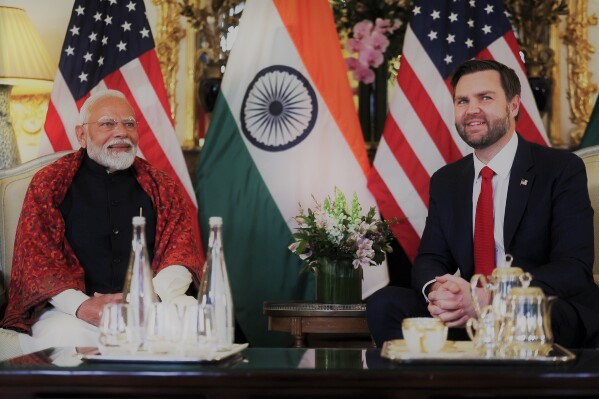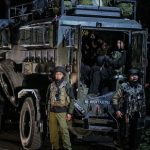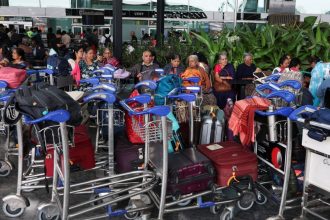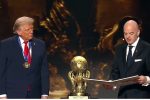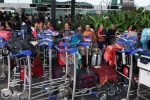NEW DELHI, April 21 — Under the blazing spring sun of New Delhi, US Vice President JD Vance stepped off his plane today into a vibrant display of Indian hospitality — a red carpet, a guard of honour, and colorful folk dancers waiting to greet him.
This four-day visit marks more than just diplomacy. It’s a heartfelt return of sorts. Accompanied by his wife, Usha — herself the daughter of Indian immigrants — and their three children, Vance began his journey in India not in a boardroom, but at the majestic Akshardham Temple. Dressed in traditional Indian attire, the family took in the spiritual serenity and culture that so many Indian-American families continue to cherish.
The visit comes at a pivotal time for both nations. Only two months ago, Prime Minister Narendra Modi met President Donald Trump in Washington, and now, India is hoping this follow-up will help finalize a much-anticipated trade deal before a temporary 90-day freeze on US-imposed tariffs expires.
Vance, a 40-year-old devout Catholic convert who met with Pope Francis just before arriving in India, will meet Modi later today. Officials say the two leaders will take stock of current progress in US-India relations and exchange views on key global and regional developments. “We’re optimistic that this visit will deepen the ties between our nations,” said Indian foreign ministry spokesperson Randhir Jaiswal.
But this isn’t just about economics. It’s also about emotion and history. The US and India — the world’s largest and fifth-largest economies — have long been navigating a friendship that includes billion-dollar defense deals, tech partnerships, and increasingly, people-to-people connections, like that embodied by Vance and his family.
Beyond New Delhi, Vance will also explore Jaipur’s famed Amber Fort and Agra’s iconic Taj Mahal — blending diplomacy with discovery.
Amidst a complex backdrop of a US-China trade war and rising global tensions, India is walking a careful line. The country was facing tariffs of up to 26% before Trump’s pause, and while evaluating the long-term effects, India is also eyeing potential opportunities in a reshaped trade landscape.
Trump, while announcing the new tariff structure earlier this month, acknowledged his “special bond” with Modi but didn’t shy away from pointing out grievances. Modi, for his part, emphasized that both nations are committed to building a “mutually beneficial trade agreement.”
As Vice President Vance and his family explore India’s cultural treasures, the world watches — not just for signatures on documents, but for signs of a growing, people-first relationship between two of the world’s most influential democracies.
